Contemporary Artist Reuven Israel looks at his practice in evolutionary terms. Where one sculpture inspires the next, and every group of work leads to the following, shifting into new directions.
The exposure to overwhelming visual information of a religion without the understanding of the ideology behind it left an everlasting impression on me.
Contemporary Artist Reuven Israel
Featured image: Untitled Folding Object 47A, 2019, Painted oak and brass hardware, dimensions vary. Photo credit: Tal Barel.
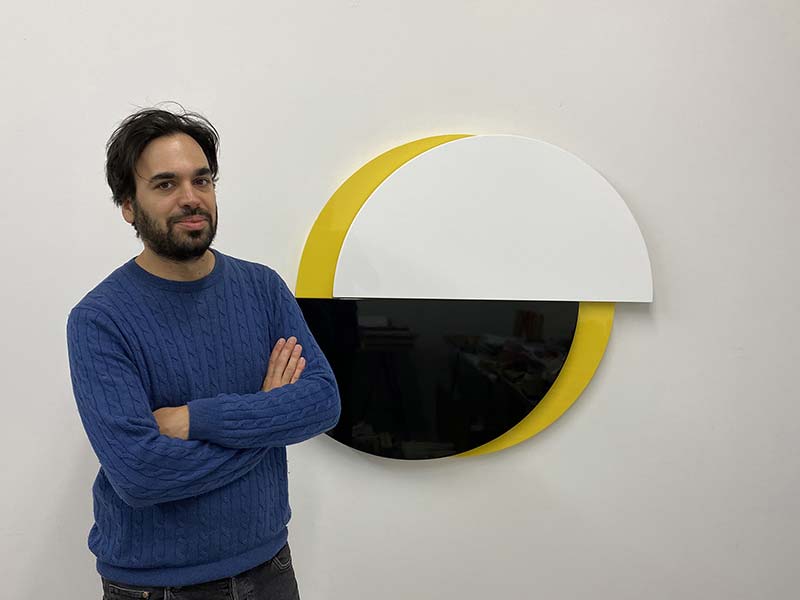
Artist portrait, Reuven Israel. Photo credit: Itay Marom.
Please tell us a little about yourself.
Growing up in Jerusalem, visual manifestations of religions were very dominant in my early life. I was raised by an observant Jewish mother. My Beatnik-Hippy father wrote a guidebook of the monasteries of the Holy Land. I often accompanied him while he was doing his research. I remember waiting for him in chapels, passing my time gazing at the statues, architecture, and ritual objects, all so foreign to my Jewish life and education. At times we accessed the monasteries’ private quarters, which felt as entering the backstage where the mundane and sacred blend together. The exposure to overwhelming visual information of a religion without the understanding of the ideology behind it left an everlasting impression on me.
What brought you to the world of contemporary art and how did you start?
I stopped practicing any form of religion in my teenage years. And started growing an interest in painting and art history. Pursuing it mostly through books and museum guides, that I found in my parent’s inexhaustible library.
After graduating from the Bezalel Art Academy Jerusalem in 2004, I moved to Tel Aviv and started a studio practice. I was lucky to find galleries that were willing to exhibit my work early on, and I have had an ongoing relationship with Braverman Gallery from Tel Aviv ever since.
After a major exhibition of my work at the Tel Aviv Museum of Art in 2011, I moved to New York, where I have lived and worked ever since. I still maintain strong ties with the Israeli art world, exhibiting there frequently.
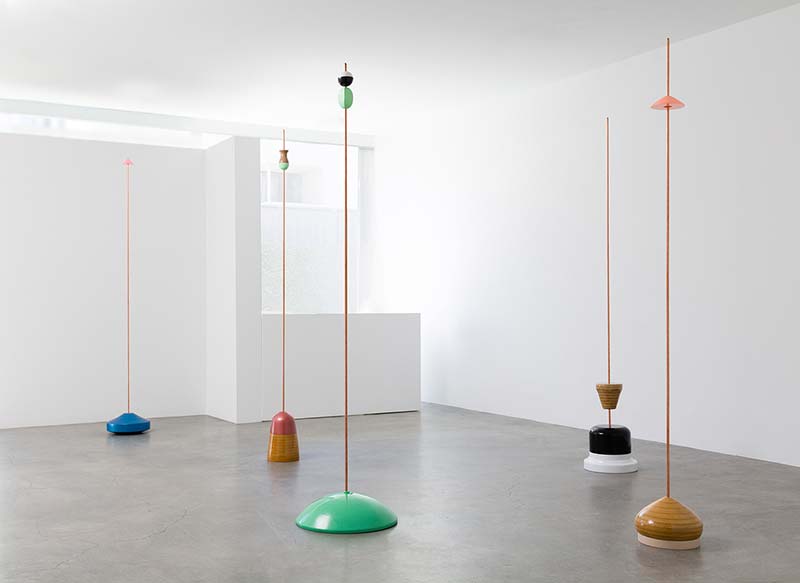
Installation view: As Above, So Below, 2016, Shulamit Nazarian Contemporary Art Gallery, Los Angeles. Contemporary Artist Reuven Israel. Photo credit: Michael Underwood.
In my more recent work, I further this process by giving up on sculptures that commit to a single shape, scale, or form. Offering instead, temporary configurations of sculptures that can be arranged in multiple possibilities.
Contemporary Artist Reuven Israel.
How do you describe yourself in the context of challenging people’s perspectives via your work and art?
When installing a public sculpture commissioned by the city of Tel Aviv a few years ago, I had the opportunity to experience what happens once I took my art out of the gallery/museum’s context and into the public sphere.
For some of the passers-by, the first reading of my public installation wasn’t necessarily as sculpture. They had their own interpretation of what these things were and what their purpose was. This led to some funny incidents like a woman warning me not to go near my piece because she heard it emits radiation.
My sculptures tend to deceive by appearance, both as having a utilitarian purpose and by their tactile qualities. In reality, behind the industrial shin, most of my works are made of wood and paint. And they rely on manual processes. Their shapes are decoupled from specific meanings. Facing my sculptures, the viewers go through the process of shedding their initial perception.
In my more recent work, I further this process by giving up on sculptures that commit to a single shape, scale, or form. Offering instead, temporary configurations of sculptures that can be arranged in multiple possibilities.

Untitled Folding Object 36A. Shulamit Nazarian Contemporary Art Gallery, Los Angeles. Contemporary Artist Reuven Israel. Photo credit: Michael Underwood.
How do you deal with the conceptual difficulty and uncertainty of creating new work?
I look at my practice in evolutionary terms where one sculpture inspires the next, and every group of work leads to the following, slowly shifting into new directions. The ideas for new pieces come while working on others. This process allows for marinating on ideas for long periods, developing and testing a range of directions that sprout out of the original inspiration, leaving room for all kinds of small sculptural events and mistakes to be explored. The most creative periods are when the pace of production in the studio lags behind the rate of new possibilities that the work keeps opening up.
I try to create logic or a set of restrictions that define the sculptures for each new body of work. For an exhibition I had at the Tel Aviv Museum of Art in 2011, I collided elements from the Temple Mount in Jerusalem with Sci-Fi influences. On the ‘SBM’ group of works, I used the concept of a shish-kabob to generate sculptures. I worked on hundreds of small objects and then skewered groups of them on metal rods, uniting them into sculptures. In my more recent works, I use the idea of sculptures that unfold out of flat shapes into totemic structures and sprawling lines in space.
Of course, there are also events in life that erupt everything you are doing and force you to stop in tracks and go in a different direction. The last of these events led to the unfolding sculptures that I’m still engaged in these days.
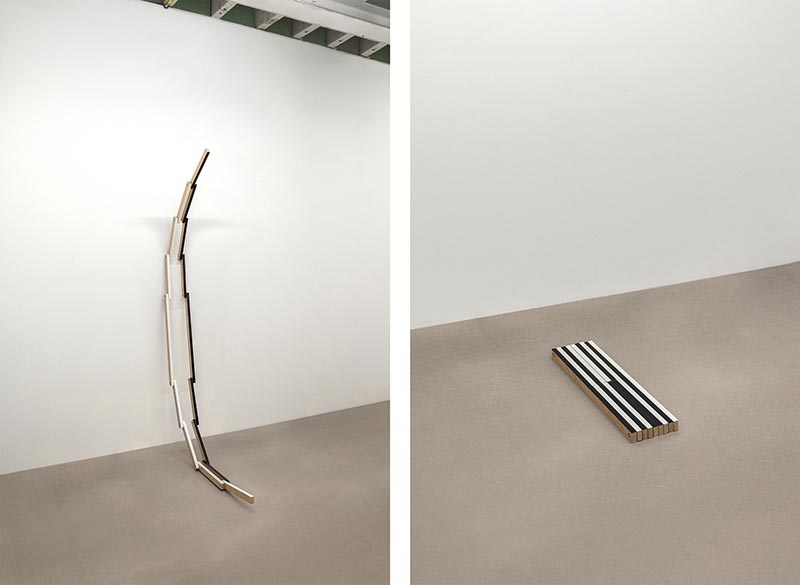
Untitled Folding Object 16B, 2018, Painted oak and brass hardware, dimensions vary, Contemporary Artist Reuven Israel. Photo credit: Tal Barel.
What inspires you? Let’s talk about your frameworks, references and process.
I am drawn to immersive experiences. Entering a gothic cathedral, a walk in a forest, plunging into the alien underwater world of a coral reef, or participating in a shamanic ritual. In all these experiences, you get to experience the logic of an ecosystem from within. In any direction you look, you will find something interesting to observe.
A few years back, I went to a Chris Watson event where the audience was sitting in the dark, listening to recordings of the jungle floor in Borneo. Different sounds repeated themselves in a constant rhythm while others came in unexpectedly. The whistles, shrieks, cries, calls, thuds, sounded orchestrated. I could sense the dampness and the smell of the jungle. These days I’m very much inspired by creating environments through repetition into which I try introducing moments of surprise.
Another constant source of inspiration is archaeological sites. One of the things that I find fascinating is the fragmented state of these places. Often these sites contain only a small fraction of what was once there. And my mind is left filling out the blanks and trying to put together the complete picture. When installing exhibitions, I like to use the logic of such sites. In the relationships I create between the different objects in the show. Giving more importance to the empty space between the sculptures.
Tell us about your studio, what kind of place is it?
My sculptures often resemble industrially-fabricated readymades that came off an assembly line. But, they are mostly fabricated from wood by means of a labor-intensive process. I usually don’t outsource the fabrication. Most of it is made in the studio with my direct involvement at all stages. My workday depends on the stage of production. I spend some days on computer work and researching things. On others, I am drawing and translating ideas into practical sketches. Following this, I am woodworking, for weeks, alone or with assistants. After that, there is a finishing phase of applying paint or some other forms of finish. This is then followed by assembling parts together into the final sculptures for days.
My studio is like a playground for ideas and experimentation, first on paper or on the computer. In later phases, assembling, arranging, dismantling the forms I’m researching.
Contemporary Artist Reuven Israel.
Could you describe your usual work-day in the studio?
For the past five years, my studio in Brooklyn is in a complex of studios built around a large shared wood shop. All the dirty aspects of the woodworking are done in the wood shop. Then the parts move into the studio, which may resemble a sweatshop, with tables filled with piles and piles of wooden pieces in various phases of applying materials on them. Scattered between the tables and mantled on the walls are structures in different stages of production and finish.
In more relaxed times, my studio is more like a playground for ideas and experimentation, first on paper or on the computer. In later phases, assembling, arranging, dismantling the forms I’m researching.
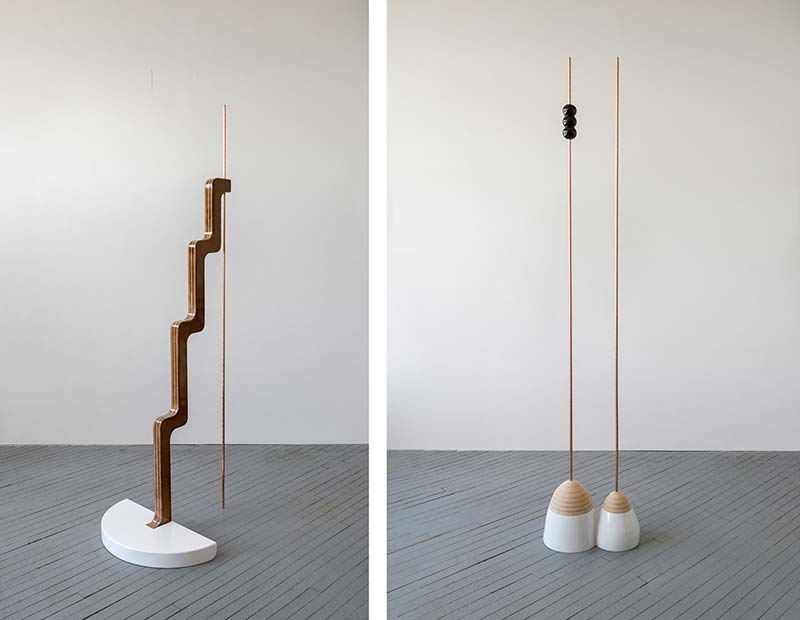
Left: Neck Of The Wood, 2017, Coppered steel and painted MDF, 97 x 220 x 70cm.
Right: Hit the White, 2016, Coppered steel rods and painted MDF, 244 x 50 x 29cm. Contemporary Artist Reuven Israel. Photo Credit: Tal Barel.
How does your audience interact and react to the work you put out into the world?
Early on in my practice, I realised that when people encounter an object that they can’t immediately categorise, they go back to a juvenile or even infantile state of physically inquiring what that thing can do. And from that, they try to understand what that thing is. Such behaviour may be problematic in regards to my sculptures. This can lead to chipping, scratching and damaging the painted surfaces. This used to freak me out. One of my earlier pieces is titled ‘Please Don’t Touch’ as a remark on my anxiety. And also on the self-absorbed and non-revealing qualities of that specific piece.
At one point, I started working with this tendency, instead of against it. I wanted my sculptures to respond if touched or poked. This led to sculptures that can be set into motion, spin, have rotating elements in them. They can have opening and closing parts, pushing buttons. I deliberately created work that provoked the viewers to touch them. Objects that oblige the viewer to activate them, intrigued me. If a sculpture could be set into motion, it forced the viewer into the action, even if it was just a slight gesture. This finding delighted me.
For the last few years, I’ve developed a notion of flux in sculptures that can fold and unfold. Expanding from flat rectangular slabs to large scale structures, not committing themselves to a particular expression in space, the sculptures are, in fact, the sum of all their different possibilities to take shape and form within a single artwork. Different sides of the sculptures are painted with varying spectrums of colour. So each arrangement creates new patterns in a tessellation that extends from one sculpture to the next. Exhibiting the work, I experimented with two different ways of incorporating the sculpture’s ability to shift and change.
In the exhibition ‘In Four Acts’, at Shulamit Nazarian Los Angeles, I left instruction sets with four compilations. On set dates, the gallery staff altered the arrangement of each of the eight sculptures. The installation changed appearances four times during the show, like snapshots captured from an extended performance in which the sculptures became the actors, and the gallery’s architecture became the stage. In another exhibition, the action of changing the configuration was performed live in front of an audience. I, along with an apprentice, walked around the exhibition space, changing the sculptures’ arrangements. The sculptures then remained in their ‘new’ form for the rest of the show.
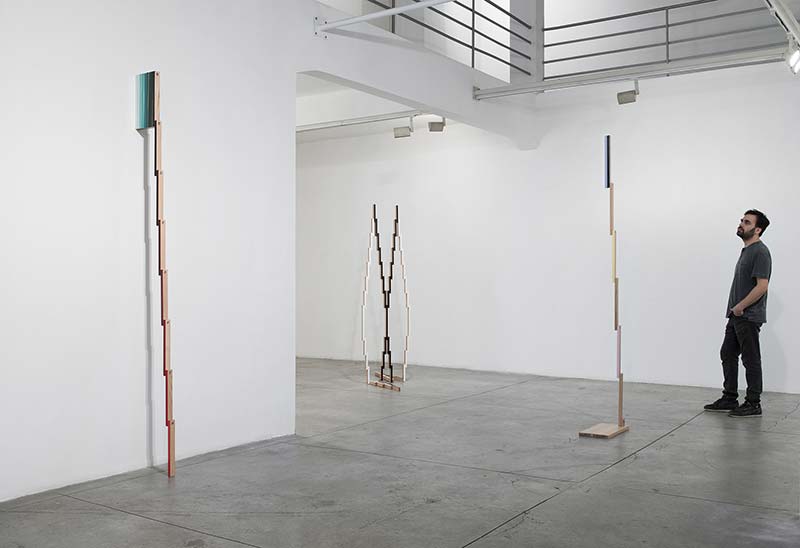
Installation view: Offshoot, 2019, Braverman Gallery Tel Aviv. Contemporary Artist Reuven Israel. Photo credit Elad Sarig
What are you working on now?
I am working on a site-specific installation commissioned by the Center for Contemporary Art in Tel Aviv. It is being curated by Nicola Trezzi.
Tailor-made for one of its galleries, the visitors will need to walk on the piece to enter the space. The installation is composed of thousands of segments of wood which are laminated in different colours. They tile the entire floor, crisscrossing and creating geometric patterns. At multiple locations, sculptural structures will sprout out and unfold from the ground up. They will leave empty blanks in the surface, where the pieces of wood, now used for the structures, once lay.
The standing geometrical configurations will emphasise the potential of the entire floor to rise and open up into standing patterns in three dimensions. The installation will also highlight the possibility of all the standing structures to fold and fit back precisely into the tiled floor. An unraveling stretch of joint segments will stretch across one side of the gallery floor. Curling into a loophole, unveiling the ability to undo the whole installation.
What’s coming next season?
At the same time as the CCA show, I will also have a small exhibition at Shulamit Nazarian Contemporary Art Gallery in L.A. This show will consist of large scale wall pieces, where elements from them spill down to the floor and rise into sculptures.
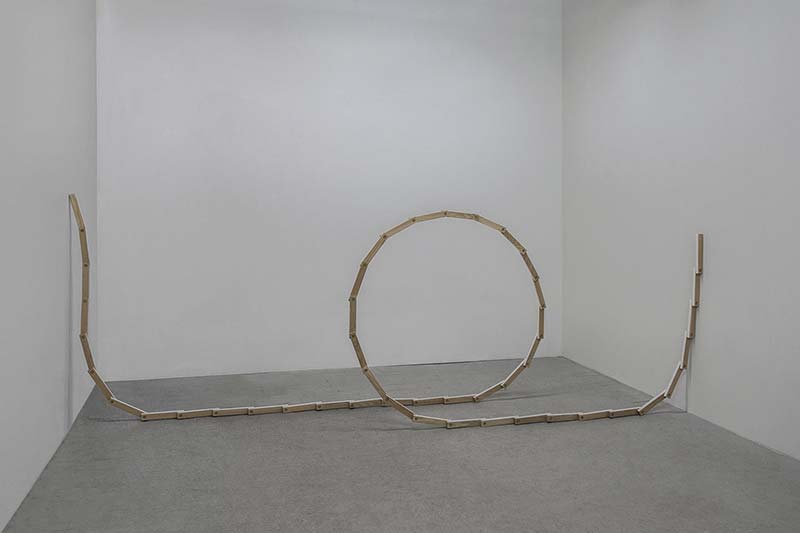
Untitled Folding Object 47A, 2019, Painted oak and brass hardware, dimensions vary. Contemporary Artist Reuven Israel. Photo credit: Tal Barel.
What were you working on when the lockdown was announced?
The CCA exhibition had been scheduled to open at the end of April. It was early March, when the pandemic scare took over. I was working around the clock on the last stage of production before shipping the work to Tel Aviv. At the same time, a significant chunk of the fabrication was in the works by a team in Israel. We were all working like crazy to reach the last phase of production to meet the deadline. Then the borders started closing. At that point, the curator decided to postpone the exhibition. Then the lockdowns came into effect, freezing work both here and in Israel. Closing public spaces, throwing all plans to the wind. We are now talking about opening the exhibition in early 2021.
Before you go – you might like to browse our Artist Interviews. Interviews of artists and outliers on how to be an artist. Contemporary artists on the source of their creative inspiration.








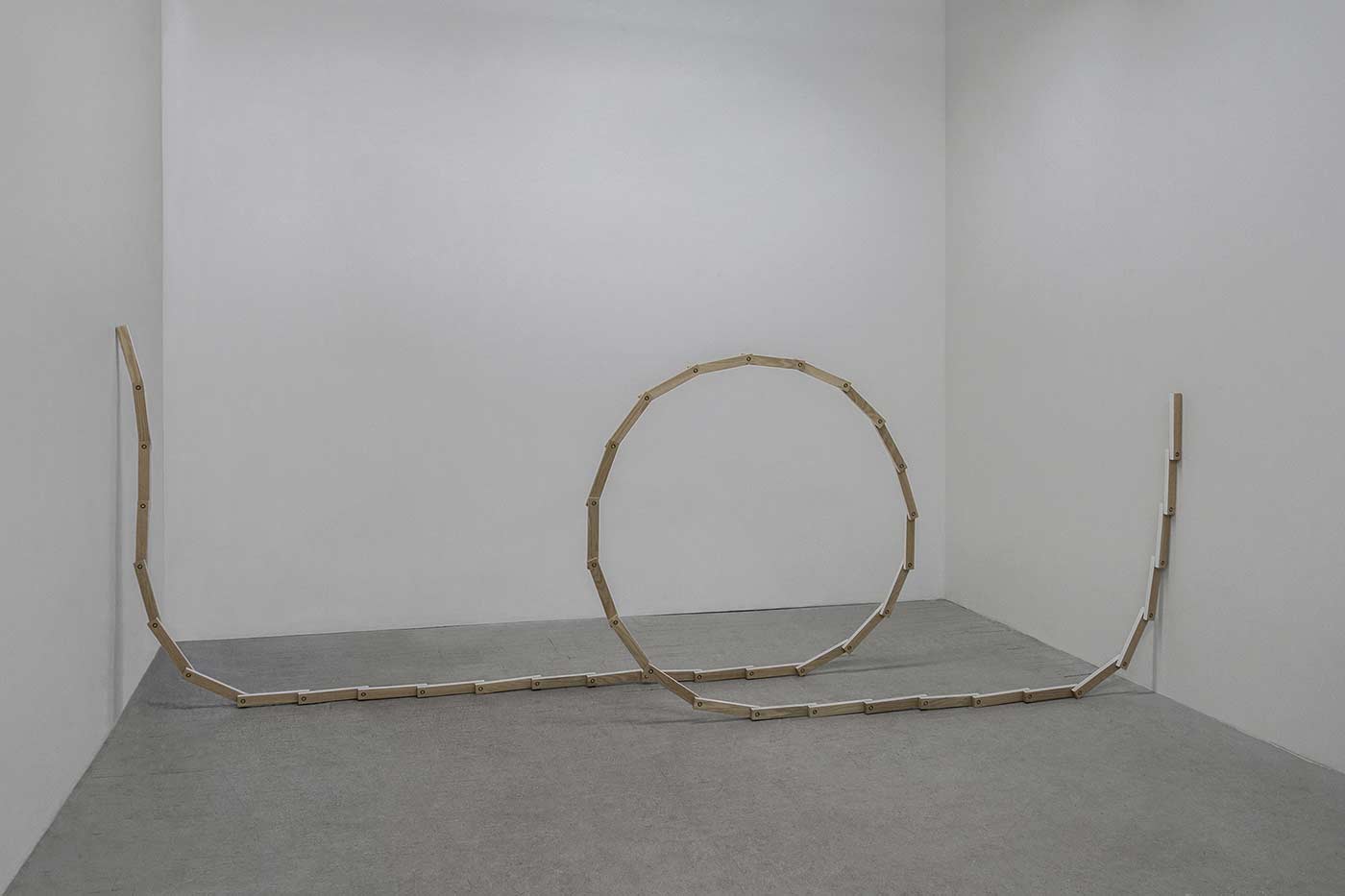



Add Comment